An article especially prepared for the Aircrew Remembrance Society by a relative of the Halifax crew.
On 28 August 2009 I attended a beautiful ceremony in Banica, southern Poland for the unveiling of a monument to seven brave Polish airmen who had been shot down by the Luftwaffe 65 years earlier. Prior to the dedication of this monument, there had been no official recognition of the tragedy - even though it had been investigated, written about and discussed by several interested researchers over many years. A small memorial had been erected at the site of the crash many years ago – but this had been inscribed “in memory of seven unknown Polish airmen”.
My father was a member of this brave crew and I have been deeply moved by the dedication and passion of members of the local community who planned and developed the new monument - and also prepared a wonderful ceremony on the day of the commemoration. In particular, Mr. Aleksander Gucwa whose kindness and commitment have been outstanding. 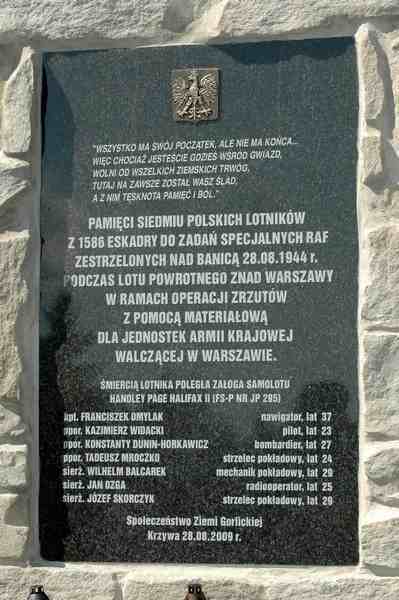
The crew members of Halifax JP-295 ‘P’ were part of the Polish Air Force Special Duties Squadron 1586 based in Brindisi, Italy and were engaged in flying supplies to the Polish Home Army to assist the Warsaw Uprising which began on 1 August 1944.
The captain and navigator of the Halifax was F/Lt Franciszek OMYLAK. The others were -
F/O. Kazimierz WIDACKI - pilot
P/O. Konstanty DUNIN-HORKAWICZ - bomb-aimer
Sgt. Jan OZGA - radio operator
Sgt. Wilhem BALCAREK - flight engineer
F/O. Tadeusz MROCZKO - gunner
Fl/Sgt Jozef SKORCZYK – gunner
The crew had carried out several missions from Brindisi to Warsaw since arriving from Britain on
10 August 1944. The flights to Warsaw were long and dangerous - and on the night of the tragedy they were in Halifax JP 295 which had been borrowed from RAF Squadron 148. Shortly after take-off the aircraft lost radio contact - and as it never returned to base, the assumption was that the aircraft had been lost in the Adriatic Sea. This was the official record for many years. 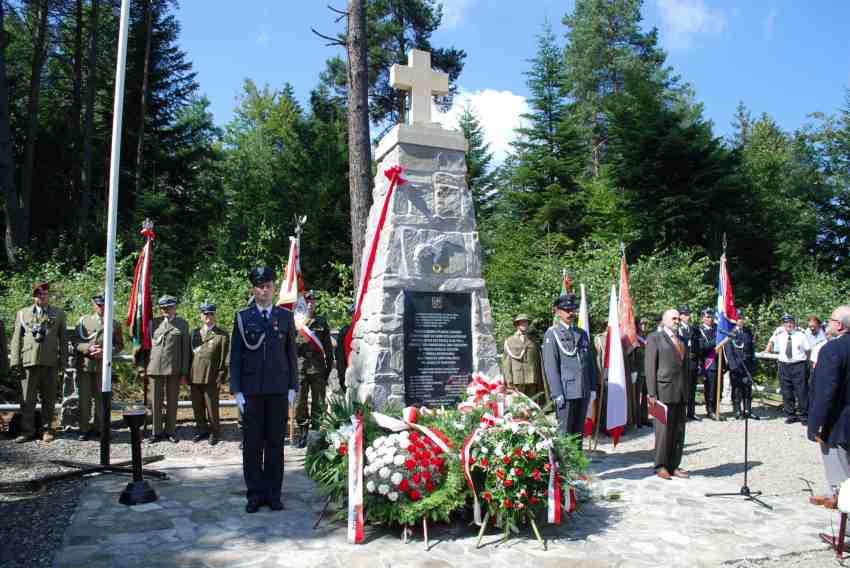
Ten days before the loss of Halifax JP 295, Liberator EW 275 with a Polish crew was shot down in Olszyny a small village 30 kms away from Banica, also on a Warsaw mission.. Only five bodies had been located at the time of the crash and they were buried in the village cemetery. This tragedy had been remembered in great detail by the local people and also photographs had been taken, which exist today. The bodies of the five Liberator crew members were removed to Rakowice, the military cemetery in Krakow, in 1965. 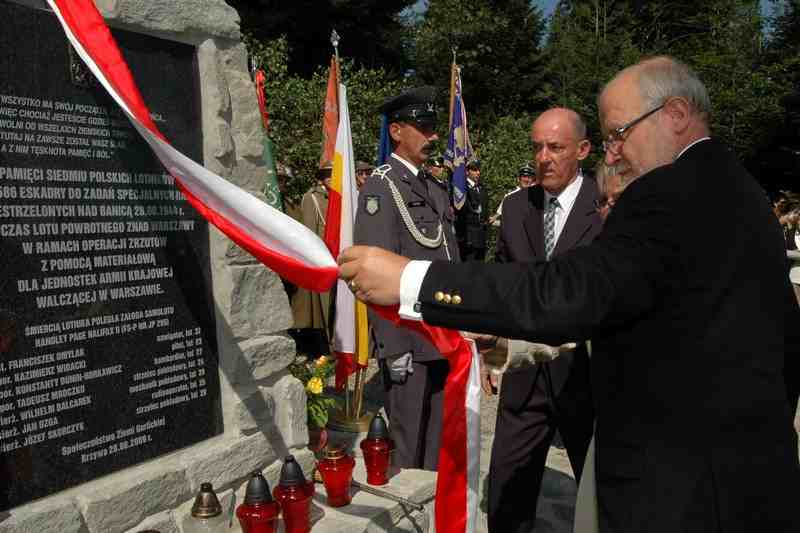
When Halifax JP 295 crashed in Banica, ten days after the Liberator crash, locals described the horrific damage to the aircraft and how dreadfully the bodies of the crew had been mutilated. There are witnesses to the crash who were small children at the time - and who are living in the area today. They still talk about the horror of the crash. Shortly after the crash the remains of the Halifax crew were buried in the nearby cemetery at Krzywa.
Significantly, in 1980 a group from a senior airmen’s club in Krakow removed bodies from the Halifax graves and organized a burial in Rakowice Cemetery for the two missing Liberator crew. The names of the two Liberator crew members were placed on new grave stones, making a full complement for the Liberator. It was claimed by this group that the Liberator had bounced 30kms from Olszyny to Banica!!
During the mid 1990s aviation enthusiasts who were interested in the Banica crash found aircraft parts at the site which showed that the aircraft was definitely a Halifax, not a Liberator. Indeed, one fragment had ‘Halifax’ clearly visible. One of the enthusiasts, Mr. Tomasz Sikorski wrote an article in a Polish aviation magazine about this find – together with his views about the crash. There had been earlier articles by other writers in various journals supporting the theory of two separate crashes, but now evidence had been found.
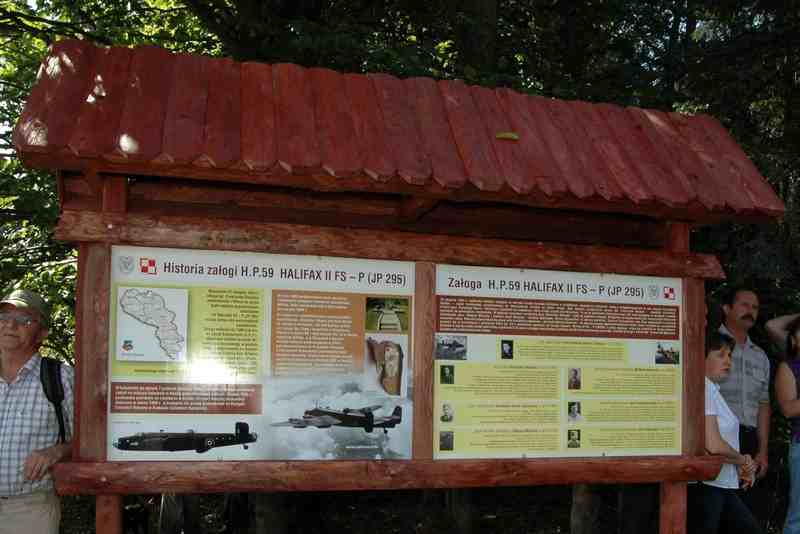
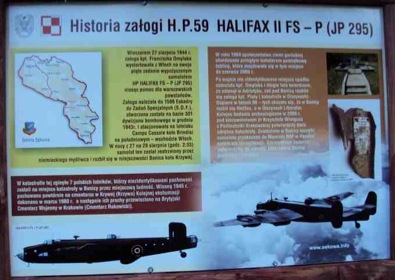
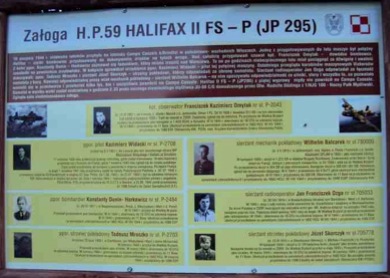
More articles - and a film made by Professor Andrzej Olejko in 2005 for Polish television about the two crashes - further supported the view that the aircraft in Banica was a Halifax, not a Liberator which had been thought to have bounced there.
Importantly, in 2006 a team led by Professor Krzysztof Wielgus, an aviation archeologist from Krakow Politechnik, carried out excavation at the Banica site. The team found almost 200 artifacts which were identified as Halifax and not Liberator. The results of the excavation was widely broadcast in Poland both in newspapers and on television, however no effort was made by the government to rectify the erroneous removal of Halifax crew from their graves and burial with incorrect names in the Military Cemetery in Krakow.
Fortunately the local community in Sekowa, where the village of Banica is located, realized that the brave crew members of Halifax JP 295 should have recognition for their sacrifice - and early in 2009 plans were developed for a superb new monument in Banica, the site of the Halifax tragedy.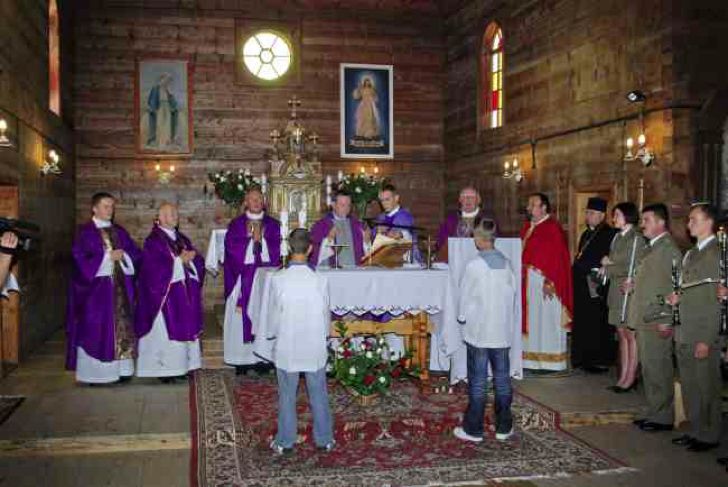
It was a beautiful sunny day on 28 August 2009 – the day of the 65th anniversary of the crash of Halifax JP 295. It was a wonderful event – as all crew members’ families had been found and invited to the commemoration.
First of all Mass was held at the local 100-year old wooden church with three priests officiating - these were Roman Catholic, Greco Catholic and Orthodox, thus representing the community. This was followed by a splendid unveiling ceremony, attended by over 300 people including the military, veterans and government representatives. After lunch a conference was held at Sękowa School which included an exposition of Halifax parts which had been excavated, together with presentations about the aircraft mix-up and research. Speakers included Mr. Tomasz Sikorski, Professor Olejko, Professor Wielgus and others – also many other aviation enthusiasts were present. There was also a performance of music, song and poetry by the students of the school which was very poignant.
Thanks to Mr. Aleksander Gucwa I was fortunate enough to meet Christopher Mackey, who is the son of Brunon Malejko crew member of Liberator EW 275. Chris’s story can be read "HERE".
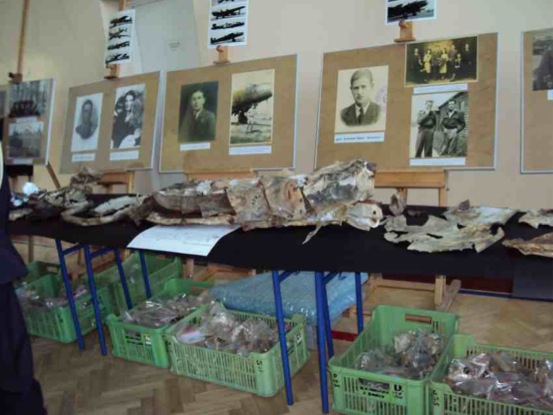
Thank you to the following people whose research and writings unraveled the Halifax mystery and therefore made the development of this monument possible:
Mr. Franek Grabowksi; Mr. Tomasz Sikorski; Mr. Szymon Serwatka; Professor Andrzej Olejko; Professor Krzysztof Wielgus; Mr. Wojciech Zmyslony; members of 300 Squadron group and Kresy-Siberia group for their assistance in locating the crew’s family members; also Mr. Aleksander Gucwa and the Sekowa committee for building this fine monument. The day and events of 28th August 2009 will be in my heart forever.
Please note that four members of the crew (my own father included) had been arrested and deported to the USSR shortly after the Russian invasion of Poland in 17 September 1939.
They were interned in Soviet gulags until 1941, when they were released under the Sikorski-Maisky agreement to join the fight against Hitler. A long and arduous journey was undertaken by these heroic men from Siberia, Kazakhstan, Iraq and Palestine to England during 1941 and 1942 to join the Polish Air Force and the Allies in Britain. Their families are hoping that proper graves can now be provided in Rakowice Cemetery for this gallant crew.
Frances Gates


The British Library is preserving this site for the future in the UK Web Archive at www.webarchive.org.uk All Aircrew Remembered on our Remembrance pages, are therefor not just remembered here, but also subsequently remembered and recorded as part of our nation’s history
and heritage at The British Library.